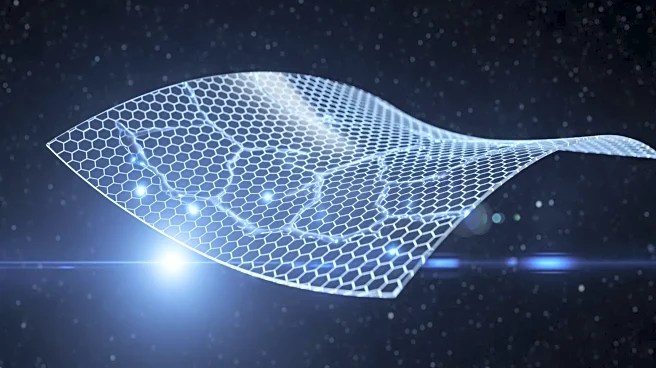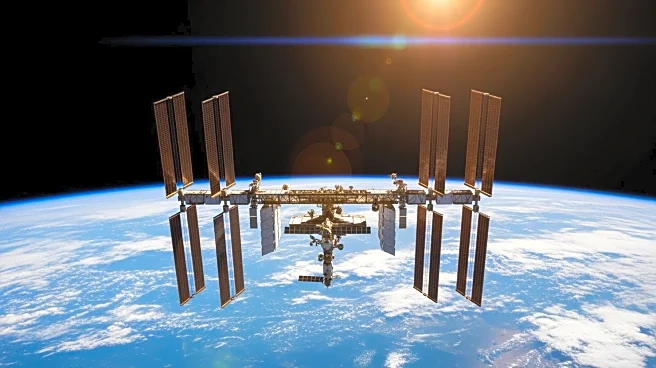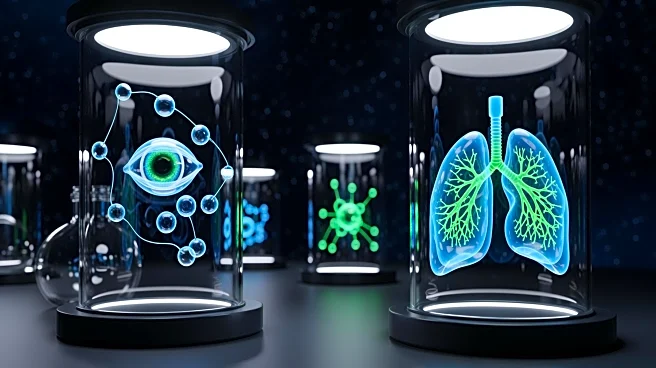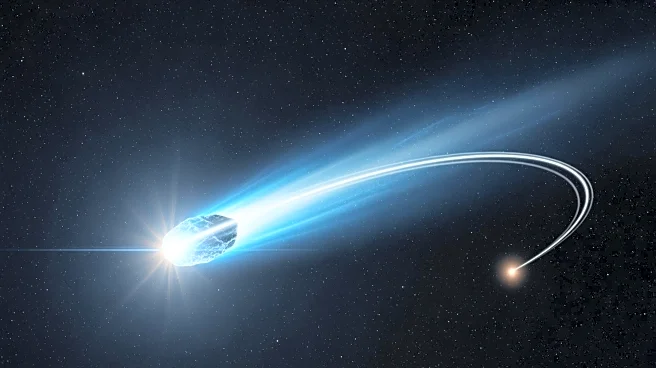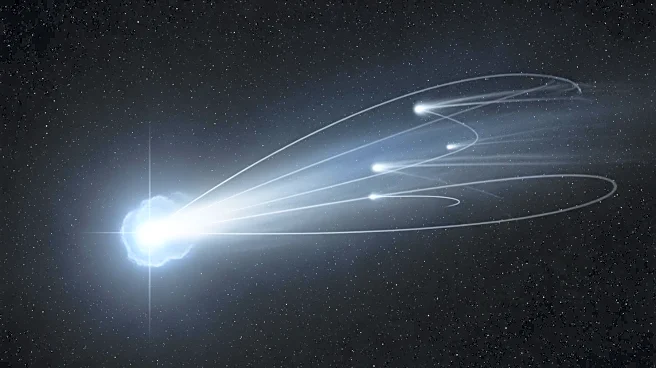What's Happening?
Researchers have developed a new space radiation shield using flexible boron nitride nanotube (BNNT) film, which shows promise in protecting against cosmic radiation. The BNNT film, created by a team from
the Korea Institute of Science and Technology and the Korea Advanced Institute of Science and Technology, offers superior neutron shielding capabilities compared to traditional aluminum shields. The film is lightweight, strong, and efficiently conducts heat, making it suitable for various structural applications. The BNNT film demonstrated approximately 15% higher radiation shielding efficiency than aluminum in joint simulations with NASA. This advancement could significantly enhance the safety of astronauts during long-term space missions and contribute to the construction of lunar and Martian bases.
Why It's Important?
The development of effective radiation shielding is crucial for the safety of astronauts and the success of future space exploration missions. The BNNT film's ability to provide superior protection against harmful cosmic radiation could extend mission durations and enable the establishment of permanent bases on the Moon and Mars. This innovation represents a significant step forward in space technology, potentially reducing the risks associated with long-term exposure to space radiation. The use of BNNTs in space applications could also strengthen technological competitiveness in the era of 'New Space,' where private companies and international collaborations play a growing role in space exploration.
What's Next?
The BNNT film is expected to be utilized in lightweight spacecraft shielding structures, protective barriers for lunar and Martian bases, and high-performance spacesuit materials. Researchers will continue to explore the film's applications in aerospace, defense, and nuclear power facilities. The ongoing development of BNNT technology will likely attract interest from space agencies and private companies looking to enhance the safety and efficiency of space missions. As the technology matures, it could become a standard component in the design of future spacecraft and habitats.
